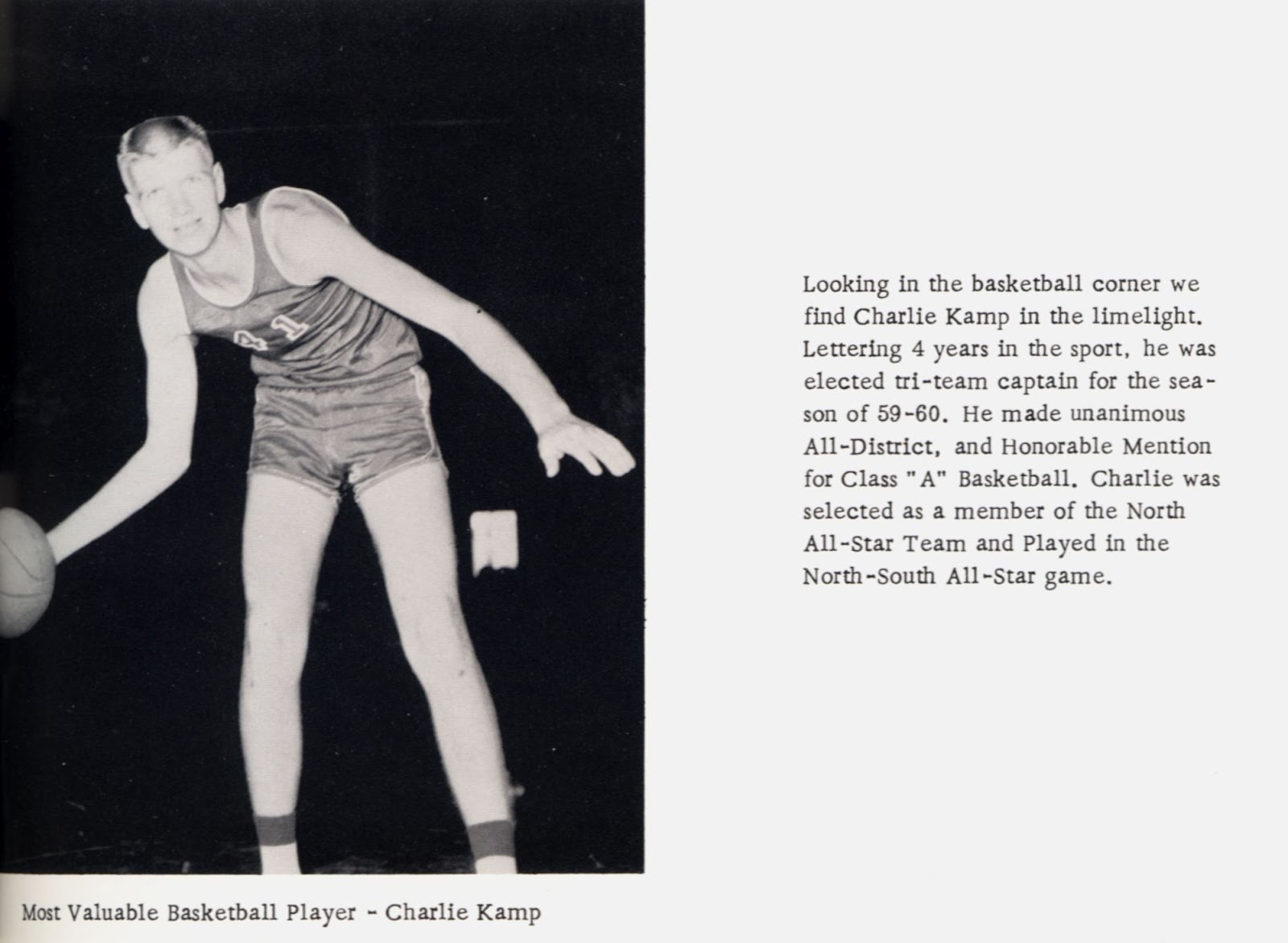As in all other camps, there was an office with the warehouse attached, along with the usual pipe racks, machine shop, and domestic water, gas, and sewer systems. There was a tennis court and a recreation hall which was used primarily for monthly safety meetings and company training courses for employees. There were also parties, covered dish suppers, and children's programs.
The typical company recreation hall was provided with several heavy square tables made by the company carpenter for use by domino players, which was the most popular game for the working men.
The company encouraged employees to raise vegetables by providing garden space and a completely equipped canning kitchen attached to the recreation hall. It included pots and pans, pressure cookers, and a machine for sealing tin cans.
The company houses for key personnel were prefabricated and all looked alike. They were erected on creosoted wooden blocks, three feet above ground, had weather boarded siding, sheetrock interior, and asbestos shingle roofs. The design made for quick and efficient erection and dismantling.
Our house at Thompson's, which was typical of the time had four rooms and one small bathroom. There was a living room, kitchen and two bedrooms. Our breakfast table was in the kitchen. This house also had a six-by-twelve-foot front porch and a small screened back porch. We lived reasonably comfortably, although without insulation, air conditioning, or central heat, we were hot in summer and cold in winter.
One of the best things about living in a company house was the rent, which was three dollars per month per room. Rent included gas (which was odorized for safety), water, and electricity.
Our backyard clothes washing equipment included two number-two wash tubs on a wooden bench, a wash board, and an old-fashioned cast iron wash pot, heated with a gas jet. We had an excellent solar-powered dryer, that is, clothes lines strung between welded-pipe tee posts. Fortunately, after our first child came, my wife had a black woman to help her for three dollars per week.
We disposed of garbage in a burning pit which had a continuously burning gas jet.
The hourly-paid people, who generally did not rate a company house, were provided with a large lot in an area separate but near the company houses. They were allowed to build a house any way they chose, and were connected with water, electricity, and sewer service, the same as company houses. Some of their homes were better than the company house where we lived. Most had large gardens and some had a fenced lot for a cow or horse.
A big event at Thompson's was the squirrel barbecue during the fall squirrel hunting season. Hunters were asked to save their kills for a week and bring them to the picnic grounds by a small lake in the field. I was not much of a hunter, but I carried a .410 gauge shotgun around in my company car. We would have seventy-five to a hundred squirrels ready to be cooked. There was also a fish fry with buffalo and catfish from the Brazos, cooked in our cast-iron wash pot which was also used to boil our babies' diapers.
During the World War II years, we lived in the company camp in the Tomball field ...[the] environment was much different from Thompson's. While all of the company camps were basically the same, each had its unique character, somewhat reflecting the ideas of the District Superintendent.
While the men rarely got together outside of the job except for safety meetings, a little dominoes, and a Christmas party, the women with their small children visited every morning over coffee, both at Thompson's and Tomball.
At Thompson's they met in one of the homes at 10 am after having set the table, so they could rush home and have the meal ready at twelve noon when their husbands came for lunch.



































